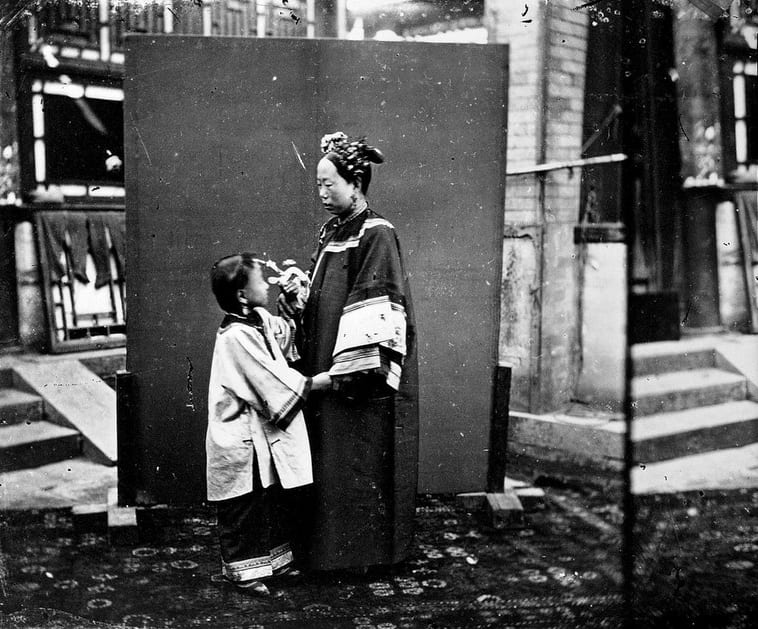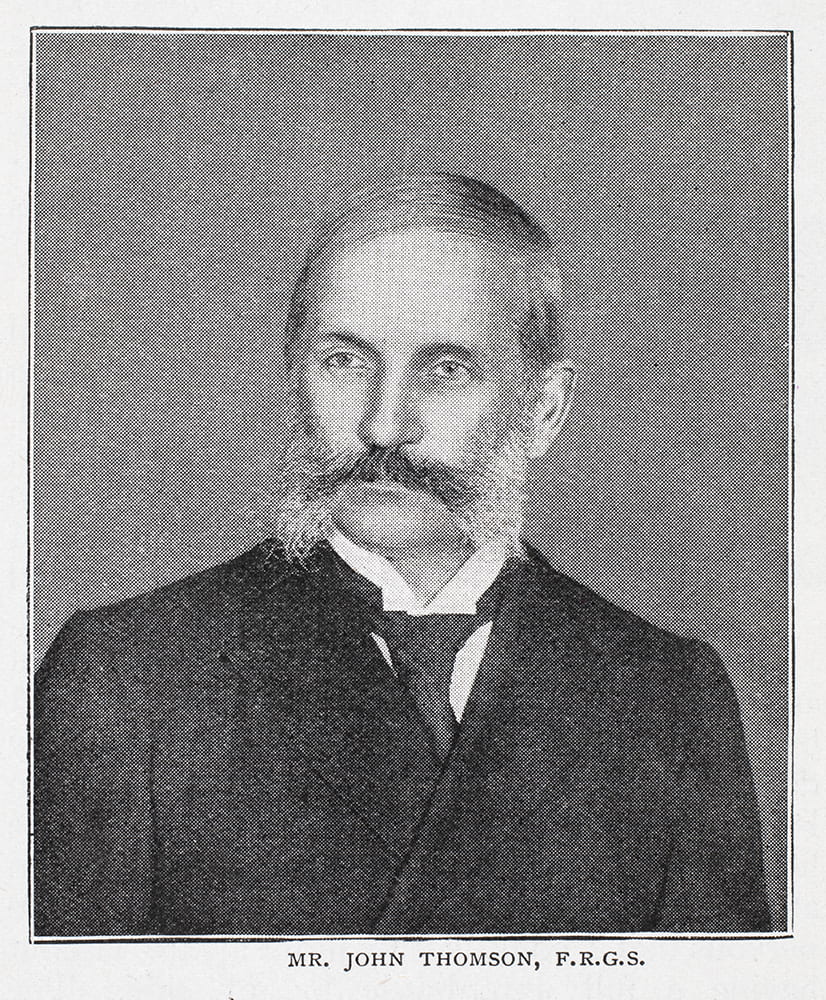Jamie Carstairs, who manages the Historical Photographs of China Project, nominated John Thomson for a plaque in Edinburgh.
The independent plaques panel at Heritage Environment Scotland (HES) announced yesterday that a plaque to commemorate the Scottish photographer John Thomson (1837-1921), is to be installed in Edinburgh. This will be one of seventeen to be installed ‘celebrating noteworthy individuals from Scottish public life’. HES describe John Thomson as a ‘towering figure in nineteenth century century photography, acclaimed for his photography in China’. This is a welcome accolade for him, also celebrating the capital’s significant contribution to Scottish photographic history.
The cast bronze plaque is to go up outside 6 Brighton Street, Old Town, Edinburgh, the tenement building where the Thomson family moved to live in an apartment in 1841, when John Thomson was four years of age. He lived there until he left for Singapore in 1861.
The wording on the plaque is to be:
JOHN THOMSON FRGS
1837-1921
PHOTOGRAPHER, WRITER
AND TRAVELLER
LIVED HERE 1841-1861.
Many thanks to Deborah Ireland, Terry Bennett, Richard Ovenden and Michael Pritchard for advice and help with factual information, and to Roberta McGrath for help liaising with the residents at 6 Brighton Street, who are also to be thanked for the granting of their permission for a plaque to be affixed to the building. Messages of support for the nomination (which formed a part of the nomination) were received from the above, and also from Betty Yao, Nick Pearce and Roddy Simpson.
The messages of support included:
‘John Thomson’s photographs provide a rich and lasting visual record of the Far East. They are loved, admired and appreciated by people of all ages and from diverse backgrounds.’ Betty Yao MBE
‘John Thomson was a master of the art. The photos he took in the Far East set standards of excellence against which other practitioners are judged. He is particularly revered in China, where he is considered to be China’s most important nineteenth-century Western photographer. When he returned to the UK in 1872, after a ten-year tour of the East, his fame earned him the moniker of ‘China Thomson’.’ Terry Bennett
‘It is very fitting that the house where John Thomson lived in Edinburgh, whilst studying at the Watt Institute and School of Arts, is to be marked. He gained a life diploma there in 1858 which enabled him to attend Chemistry classes (today this institute is part of the Heriot-Watt University) and it was the knowledge he gained during this period which propelled him forth into the world to become the leading travel photographer of the Victorian age.’ Deborah Ireland
‘John Thomson is internationally important and the pioneering images he created in the Far East, especially China, England and Cyprus continue to be widely exhibited and the focus of admiration, interest and study.’ Roddy Simpson

Manchu lady and child. Photograph by John Thomson (negative number 701). Credit: Wellcome Collection. Public Domain
The idea to nominate the great Scottish photographer John Thomson for a plaque originated during research to restore his grave in south London, in which it became apparent that he was not publicly commemorated in Edinburgh. HES described the nomination application as ‘exemplary’ and concluded that a plaque ‘might raise the profile of John Thomson and interest in documentary photography as a whole’.
Thomson is often on display in other ways. An exhibition Siam through the lens of John Thomson 1865-66 runs on until 17 May 2020 at Chester Beatty, Dublin. These marvellous large reproductions, made from scans of Thomson’s superb negatives held at the Wellcome Collection, epitomise the ‘power of picturing’. There are hopes for a similar exhibition in Edinburgh next year.
Thomson is generally considered to be the best of the nineteenth century foreign photographers in China. His magnum opus, Illustrations of China and Its People, was published in four large volumes in 1873-4, and featured 200 of his photographs along with his droll, perceptive contextualisation. Thomson is also well-remembered for his photographs in Street Life in London, a ground-breaking and influential publication that arose from a collaboration with journalist Adolphe Smith in 1877. Thomson was a member of the Royal Photographic Society from 1879 and gained the Royal Warrant (‘By Appointment to…’) in 1881. It is fitting that a heritage plaque is to be installed in Edinburgh just before ‘China’ Thomson’s centenary year in 2021.

A portrait of John Thomson FRGS, FRPS, aged about 60, reproduced in ‘The Wide World Magazine’ in 1898, in an article about him by Arthur E. Swinton, entitled ‘Queer Sights in China’.
For a brief outline of John Thomson’s photographic career, useful links, and some of his photographs, see https://www.hpcbristol.net/photographer/thomson-john.
See also the blog on the British Photographic History site.
